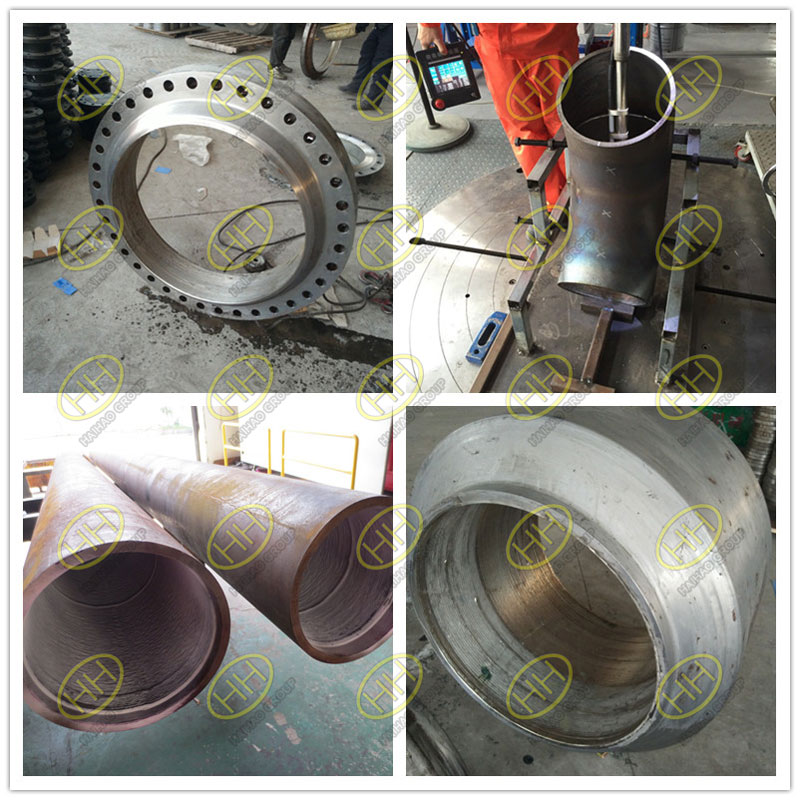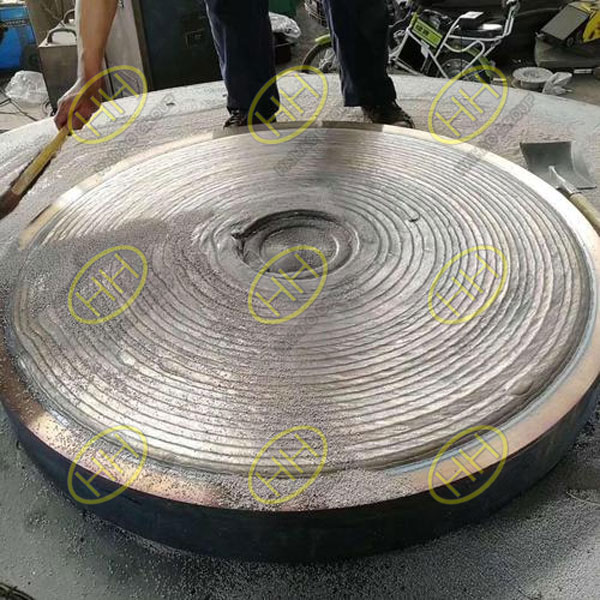Applications and techniques of overlay welding for different materials and operational requirements
Overlay welding, a welding process that applies a layer of specialized material to a base metal, plays a critical role in enhancing the performance and lifespan of components across various industries. By introducing wear-resistant, corrosion-resistant, or impact-resistant properties to the surface, Overlay welding reduces material consumption, lowers production costs, and extends the service life of parts. Below, we explore the unique applications and techniques of Overlay Welding for different materials and operational requirements.
1.Tungsten Carbide Overlay Welding
Tungsten carbide, with its extremely high melting point of 3000°C, partially melts under the heat of the arc during Overlay Welding. The resulting overlay often consists of martensitic steel or martensitic alloy cast iron, which provides excellent surface hardness. However, its inherent brittleness and high crack tendency make it suitable only for applications where high surface hardness is required.
2.Alloy Cast Iron Overlay Welding
Martensitic Alloy Cast Iron: Known for its high crack tendency, this material requires preheating and slow cooling to prevent defects. Post-weld machining is difficult, limiting its application to components that do not require further processing.
Austenitic Alloy Cast Iron: While less hard than martensitic types, it also faces challenges with cold cracking. Preheating and slow cooling are necessary, and it is similarly used for components without post-weld machining requirements.
3.Overlay Weldingfor Cavitation and Sand Abrasion Resistance
Using low-carbon chromium-manganese austenitic electrodes, this type of Overlay Welding produces a dual-phase microstructure of austenite and ferrite. The overlay has excellent crack resistance, and while its initial hardness is moderate, it strengthens rapidly under impact, making it highly effective against cavitation.
4.Impact Wear-Resistant Overlay Welding
Overlay Welding high-manganese steel produces a unique property: the surface transforms under impact pressure. The tough austenitic structure changes into hardened martensite with carbides, providing a dual advantage of impact resistance and wear resistance. Precise control of heat input, including short welding paths and forced cooling with water, ensures rapid cooling rates essential for optimal results.
5.High-Temperature Corrosion and Wear-Resistant Overlay Welding
Below 450°C: Chromium stainless steel overlays resist steam and weak acid corrosion, with excellent crack resistance and no preheating required.
450–580°C:Austeniticstainless steel overlays are commonly used for medium-to-high-pressure valve sealing surfaces. The dual-phase structure of austenite and ferrite ensures good crack resistance.
500–650°C: High-chromium cast iron overlays offer exceptional hardness (HRC ≥ 40–48) but require thorough preheating to prevent cracking.
6.Overlay Weldingfor Frictional Wear at Room Temperature
Typically used to restore worn components, this type of Overlay Welding prioritizes dimensional recovery over extreme hardness or wear resistance. Low-carbon, low-alloy steel overlays offer good machinability and crack resistance, while medium-carbon alloys provide higher hardness but require careful heat treatment for machining.
7.High-Speed Tool Overlay Welding
Overlay welding high-speed steel tools requires precise control of preheating and cooling to minimize carbide segregation. After welding, the tool must undergo immediate heat treatment to achieve optimal performance. Proper post-weld annealing enhances the longevity of the tool, making it suitable for demanding applications.
8.Cold-Forming Die Overlay Welding
High-carbon chromium alloys offer excellent wear resistance but require preheating up to 550°C and controlled cooling to avoid cracking. Low-chromium variants provide better crack resistance, with preheating temperatures of 300–400°C.
9.Hot-Working Die Overlay Welding
Applications like hot forging dies and rolling tools face challenges such as quenching-induced cracking. Controlled interpass temperatures, preheating, and slow cooling are critical for maintaining the integrity of the weld layers. Additional steps, such as post-weld soaking at 200°C, ensure longevity and performance.
Overlay welding is a versatile and highly specialized welding process tailored to meet diverse industrial demands, including wear resistance, corrosion protection, and impact durability. Its applications span across industries like agriculture, mining, metallurgy, and tool manufacturing, showcasing its value in both production and repair scenarios. With precise material selection, advanced techniques, and strict process control, Overlay welding not only enhances component performance but also contributes to sustainable practices by extending the lifecycle of critical parts.



